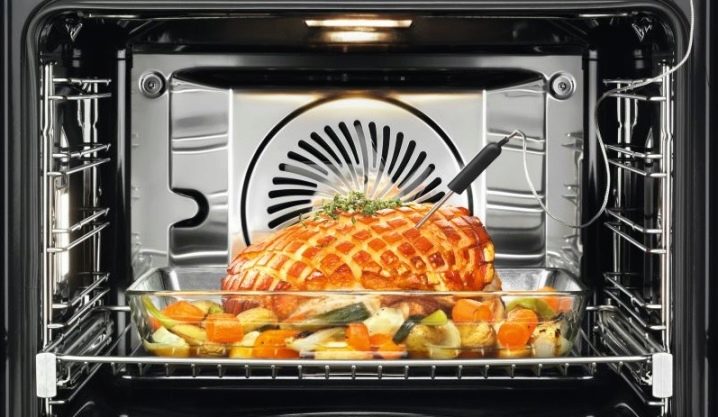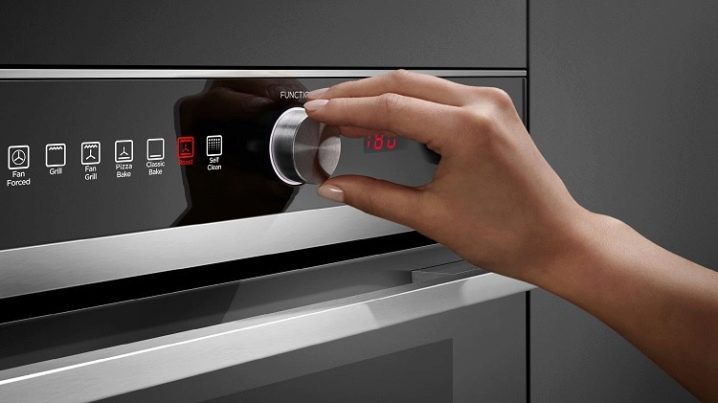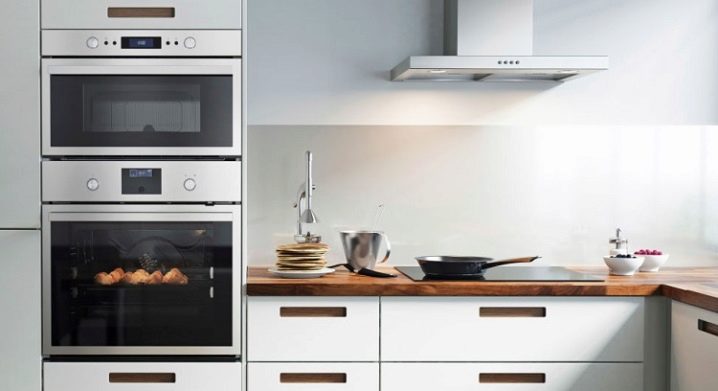Oven power

The oven is a device that no self-respecting housewife can do without. This appliance makes it possible to bake various products and prepare amazing dishes that cannot be prepared in any other way. But there are various models of such devices, which differ greatly from each other, not only in characteristics and appearance. They also vary significantly in price. Let's try to figure out what gives the different power indicators of the electric oven, and whether it is worth buying more expensive models.
Varieties
As it has already become clear, this technique is divided into certain categories:
- dependent;
- independent.
The first category is special in that it has panels in front that control the burners and the oven, which is why it can only be used with hobs of certain categories. For a number of ovens, manufacturers immediately offer options for hobs. In addition, the disadvantage will be the need to place devices close to each other for connection. On the other hand, both elements usually have the same style, so you don't have to find any combination yourself. Another disadvantage is that if the panel breaks, you will lose control of both vehicles.

The second category differs from the first by the presence of its own switches. Such solutions can be used with any hobs or without them at all. And you can embed these options anywhere.
In terms of dimensions, cabinets are:
- narrow;
- full-size;
- wide;
- compact.
This will affect how the built-in oven is built into the kitchen wall or cabinet.
According to the functionality of the oven, there are:
- ordinary;
- with grill;
- with microwave;
- with steam;
- with convection.
And this moment will be one of many that will affect the power consumption of the oven, since various types of heating are used here, and additional functions require an increase in energy consumption.

Dependence of temperature on power
If we talk about the dependence of temperature on power, then it should be understood that everything will depend on the methods of programming technology. For example, if you activate it in simple operating mode, then, say, it will consume 1800 watts. But a number of models have a so-called “fast heating” function. Usually on the technique itself, it is indicated by a symbol in the form of three wavy lines. If you activate it, then the oven will dramatically increase the power to, say, 3800 watts. but this will be relevant for some specific models.
In general, the connection power of ovens from various manufacturers currently on the market ranges from 1.5 to 4.5 kW. But most often, the power of the models will not exceed somewhere in the 2.4 kilowatts. This is enough to provide a maximum cooking temperature of 230-280 degrees Celsius. This level is standard for cooking in ovens. But devices with a power of more than 2.5 kW can be heated to higher temperatures. That is, for them, the indicated indicators are the average temperature. And the maximum will reach 500 degrees Celsius.But here, before choosing, you should make sure that the wiring in your house can withstand such a load and will not simply burn out as soon as you turn on this mode.
And one more thing that should be understood - such a high temperature is not intended for cooking. This temperature is usually needed to remove grease from the walls and door of the oven. That is, it makes no sense to cook food at the maximum, since electricity will be spent per hour so much that it will be economically unprofitable. And the wiring may simply not stand it. For this reason, if you have an oven that is distinguished by low or low power, it would be better to leave the temperature at 250 degrees and cook a little longer, but you will spend less energy.

Operating modes and energy classes
If we talk about operating modes, then you should start with such as convection. This option provides for an even heating of the oven before cooking, both below and above. This mode can be called standard, and it is present everywhere without exception. If it is activated, then food is made at a specific level. In this mode, the fan and the heating element are active, which permanently heat up and distribute heat correctly.
The second is called “convection + top and bottom heating”. Here the essence of the work is that the work of the indicated heating elements and the fan is carried out, which correctly distributes the heated air masses. Here you can cook on two levels.
The third mode is top heating. Its essence is that in this mode the heat will go exclusively from above. It is logical that if we are talking about the bottom heating mode, then everything will be exactly the opposite.
The next mode is grill. It differs in that a separate heating element with the same name is used for heating. Has three modes:
- small;
- big;
- turbo.
The difference between all three will consist only in the different heating power of this element and the corresponding heat release.
Another option is a convection grill. Its essence is that not only the grill is involved, but also the convection mode, which work, replacing each other. And also the fan will be active, evenly distributing the generated heat.
In addition, there are two more modes - "top heating with convection" and "bottom heating with convection".

And one more option is "accelerated heating". Its essence is that it allows you to heat the oven as quickly as possible. It should not be used for cooking or food preparation. This mode simply saves time. But not always electricity.
The previous mode should not be confused with “quick warm-up”. This option is intended to warm up the space of the entire area of the oven inside. This mode also does not apply to food preparation. That is, both modes can be characterized as technical.
Another operating mode is called "pizza". This option allows you to cook pizza in just a couple of turns of the minute hand. But it can also be used for making pies and other similar dishes.
Option "tangential cooling" is intended to accelerate the cooling of not only the device, but also the space inside. It makes it possible to prevent the glasses from fogging up inside, allowing you to watch the cooking of food.
Fan mode also makes it possible to accelerate the temperature drop inside the oven.
The penultimate function that I want to talk about is the "timer". This function consists in the fact that, knowing the exact cooking temperature according to the recipe and the required time, you can simply put the dish to cook, and after the necessary time, the oven will turn itself off, notifying the user about this with a sound signal.
At this time, the hostess can go about her own business and not be afraid that the food will not cook or burn.

The last thing I would like to say, finishing the topic of operating modes - “three-dimensional cooking”. The peculiarity of this mode is that steam is fed into the oven with a special three-dimensional flow, due to which the food not only cooks well, but also preserves all the useful and nutritious properties to the maximum.
Speaking of energy consumption classes, it should be said that the equipment in question in stores today is divided into models of groups A, B, C. There are also categories D, E, F, G. But these models are no longer produced.
In accordance with the described gradation, the energy consumption group can range from the maximum economical value to the conditionally economical one. The most advantageous in terms of their energy properties will be the models designated by the letters A + and A ++ and above.
Generally speaking, the power consumption classes have the following meanings:
- A - less than 0.6 kW;
- B - 0.6-0.8 kW;
- C - up to 1 kW;
- D - up to 1.2 kW;
- E - up to 1.4 kW;
- F - up to 1.6 kW;
- G - more than 1.6 kW.
For comparison, we note that the average power of gas models will be up to 4 kW, which, of course, will be very disadvantageous in terms of resource consumption. All electric models will have a capacity of up to 3 kW.

What does it affect?
It should be taken into account that built-in appliances will consume significantly more energy than a stand-alone device. The average built-in version will consume about 4 kW, and the stand-alone version will not exceed 3.
AND you should not underestimate the power factor as such, because quite a lot depends on it.
- The amount of electricity will depend on the capacity, which is consumed, as a result, the bill for electricity consumption at the end of the month. The more powerful the oven, the greater the consumption.
- Models that have a higher power will cope with cooking faster than some low-power models. The cost of light is reduced, as mentioned above.
That is, summing up the above, if we know how much the equipment of interest to us consumes, we can find the most profitable option so that it gives maximum efficiency with minimum electricity costs.

How to save energy?
If there is a need or desire to save electricity, it should be applied in practice the following tricks:
- do not use preheating, unless the recipe requires it;
- make sure that the cabinet door is closed quite tightly;
- if possible, cook several dishes at the same time, which will save on heating;
- apply residual heat so that the food reaches the stage of final readiness;
- use dishes of dark colors, which absorb heat better;
- if possible, use the timer mode, which will automatically turn off the oven immediately after cooking, thereby preventing the consumption of unnecessary electricity while the user is busy with some other business.
The practical application of these tips will significantly reduce the consumption of electrical energy at times during cooking in the oven.














The comment was sent successfully.